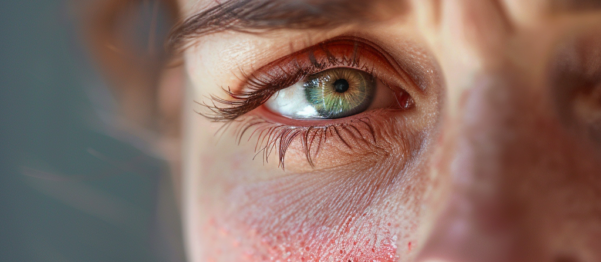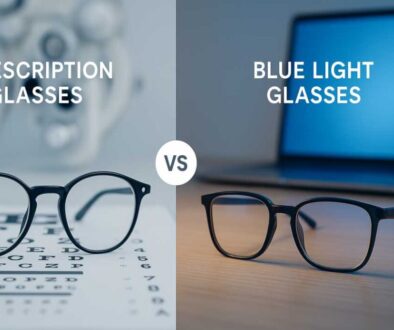Understanding Demodex (Eyelash) Mites: Symptoms, Treatments, & Prevention
What Are Demodex Mites?
Demodex mites are microscopic organisms that reside on human skin, primarily within hair follicles and sebaceous glands. Everyone has them, and they’re typically harmless, but an overpopulation can lead to issues like demodicosis or exacerbate rosacea symptoms.
There are two main types: Demodex folliculorum, found in hair follicles, and Demodex brevis, in sebaceous glands. They consume skin cells and sebum, contributing to natural skin cell turnover.
However, an increase in their population can cause eye irritation and inflammation, particularly in those with weakened immune systems or hormonal imbalances.

The Link Between Demodex Mites and Eye Conditions
Studies indicate a correlation between Demodex infestations and eye conditions like blepharitis, where eyelid inflammation can occur if mites are overly prevalent near the eyelashes.
Identifying Symptoms of Demodex Infestation Around the Eyes
Symptoms of excessive Demodex mites around the eyes include itching, redness, and a foreign body sensation. This can potentially lead to blepharitis, characterized by swollen, red eyelids and a gritty sensation.
Treatment Options for Demodex-Related Eye Issues
Treatment options involve good hygiene, eyelid cleaning, and prescribed treatments like XDEMVY (lotilaner ophthalmic solution) 0.25%, specifically indicated for treating Demodex blepharitis.
Preventive Measures and Eye Care Maintenance
To prevent issues associated with Demodex mites, it’s essential to maintain excellent eyelid hygiene. This includes regularly washing the face and eyes with gentle, non-oily cleansers and considering occasional eyelid scrubs to minimize the mites’ food sources and habitats. Regular consultations with your optometrist can help keep an eye on mite populations and prevent significant problems. Other preventative measures include:
- Avoid sharing makeup, especially mascara and eyeliner.
- If you wear eyelash extensions, clean them as directed and pay attention to your stylists level of cleanliness.
- Wear glasses rather than contact lenses until the problem is gone.
Demodex Mite Life Cycle and Habitat
Demodex mites thrive in human hair follicles and sebaceous glands, completing their 3–4-week lifespan entirely on their host. In Fort Collins, where dry climates may increase oil production, these mites feed on skin cells and sebum.
-
Reproduction: Females lay eggs deep in follicles, hatching into larvae that mature in 7 days.
-
Habitat: D. folliculorum prefers eyelash follicles, while D. brevis inhabits oil glands. Overgrowth often occurs when excess oil or poor hygiene creates ideal breeding conditions.
-
Local Insight: Colorado’s low humidity can paradoxically trigger oily skin, fostering mite populations. Regular eyelid cleansing helps disrupt their lifecycle.
Risk Factors for Demodex Overgrowth
Certain factors increase susceptibility to Demodex infestations, particularly in Fort Collins residents:
-
Age: Adults over 50 have higher mite densities due to aging skin and oilier eyelids.
-
Skin Health: Rosacea, acne, or seborrheic dermatitis create mite-friendly environments.
-
Hygiene Habits: Infrequent face washing or sharing eye makeup (common in group activities like Fort Collins fitness studios) raises risks.
-
Immune Health: Diabetes or autoimmune disorders weaken defenses against overgrowth.
-
Environment: Dusty, windy conditions in Northern Colorado can introduce irritants, worsening inflammation.
How Demodex Mites Are Diagnosed
Fort Collins eye doctors use precise methods to confirm Demodex infestations:
-
Slit-Lamp Exam: Optometrists inspect eyelashes for cylindrical dandruff (mite waste) at the base.
-
Eyelash Sampling: Mites are microscopically identified after removing 2–3 lashes.
-
Symptom Assessment: Persistent redness, itching, or gritty sensations differentiate Demodex blepharitis from dry eye (common in Colorado’s arid climate).
Pro Tip: Local clinics like Poudre Valley Eyecare specialize in diagnosing mite-related issues with advanced imaging tools.
Demodex and Contact Lenses: Risks and Recommendations
Contact lens wearers in Fort Collins face unique challenges:
-
Risks: Mites transfer from lenses to eyes, worsening irritation. Biofilm on lenses can harbor mites.
-
Solutions:
-
Switch to daily disposables to reduce contamination.
-
Avoid overnight wear—common during Fort Collins outdoor adventures.
-
Clean lenses with peroxide-based solutions (avoid lipid-rich formulations).
-
Use glasses during flare-ups to let eyelids heal.
-
Natural and Over-the-Counter Remedies
Fort Collins residents can explore these accessible options:
-
Tea Tree Oil: Products with terpinen-4-ol (≥50%) effectively kill mites. Available at local stores like JAX Mercantile.
-
Hypochlorous Acid Spray: Safe for daily lid hygiene; reduces inflammation.
-
Warm Compresses: Unclog follicles using a microwaveable mask (sold at Fort Collins optometry clinics).
Note: Severe cases require prescription treatments like XDEMVY—consult a Fort Collins eye specialist first.
Long-Term Management and Follow-Up Care
Sustainable Demodex control in Colorado involves:
-
Routine Hygiene: Daily lid scrubs with non-irritating cleansers (e.g., Ocusoft).
-
Professional Care: Biannual check-ups at Fort Collins optometry clinics to monitor mite levels.
-
Skincare Adjustments: Oil-free moisturizers to balance sebum without attracting mites.
-
Comorbidity Management: Treat rosacea or allergies with help from local dermatologists.
Living Comfortably with Demodex Mites
Remember, the presence of Demodex mites is perfectly normal, and they are a standard part of our ocular and skin health. Understanding their role and managing their numbers effectively can help you maintain comfortable and healthy eyes.
At Poudre Valley Eyecare, our focus is on providing comprehensive eye care and managing conditions that may impact your eye health, including those related to Demodex mites. Our dedicated team ensures the highest standard of care, helping you manage these common yet often unnoticed mites.
Contact us to discover more about our services and how we can assist you in achieving and maintaining optimal eye health, ensuring comfort and clarity in your vision.
FAQs
-
Demodex mites are microscopic organisms that live in hair follicles and sebaceous glands. An overpopulation can cause eye irritation, redness, and conditions like blepharitis.
Dr. Eric Torgerson
Owner at Poudre Valley Eyecare
Dr. Eric Torgerson is the owner of Poudre Valley Eyecare, and has been recognized for his contributions to optometry and his commitment to community health through various roles and accolades within the Northern Colorado Optometric Society and the Colorado Optometric Association.
Why Choose Us?
Our advanced technology and individualized care deliver results for patients of all ages. Our routine exams allow us to spot changes in your vision and allow us to treat those changes early. We have a comprehensive understanding of eye care, which means we can treat a wide range of conditions and chronic diseases. Our in-depth routine exams and customized treatment plans set us apart from the rest.


Please note: None of the above should be considered medical advice. If you’re having any concerns about your vision, please reach out to us immediately or see your primary care provider.




